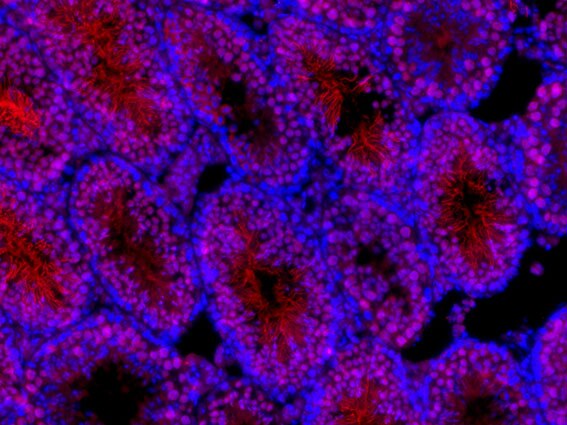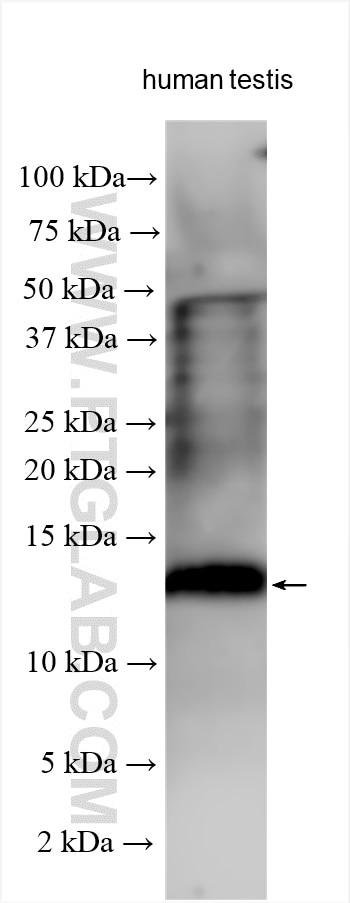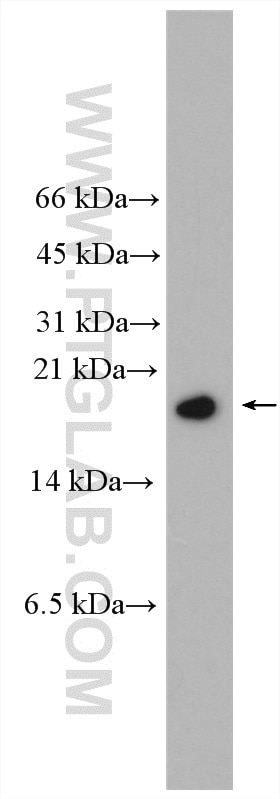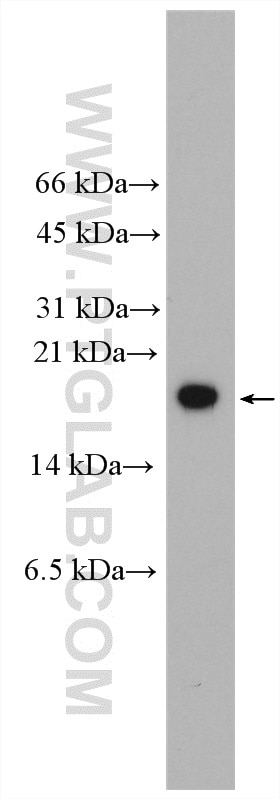Tested Applications
| Positive WB detected in | human testis tissue, mouse testis tissue, rat testis tissue |
Recommended dilution
| Application | Dilution |
|---|---|
| Western Blot (WB) | WB : 1:200-1:1000 |
| It is recommended that this reagent should be titrated in each testing system to obtain optimal results. | |
| Sample-dependent, Check data in validation data gallery. | |
Published Applications
| WB | See 5 publications below |
| IF | See 1 publications below |
Product Information
15697-1-AP targets PRM1 in WB, IF, ELISA applications and shows reactivity with human, mouse, rat samples.
| Tested Reactivity | human, mouse, rat |
| Cited Reactivity | human, mouse |
| Host / Isotype | Rabbit / IgG |
| Class | Polyclonal |
| Type | Antibody |
| Immunogen |
CatNo: Ag8323 Product name: Recombinant human PRM1 protein Source: e coli.-derived, PGEX-4T Tag: GST Domain: 1-51 aa of BC003673 Sequence: MARYRCCRSQSRSRYYRQRQRSRRRRRRSCQTRRRAMRCCRPRYRPRCRR Predict reactive species |
| Full Name | PRM1 |
| Calculated Molecular Weight | 51 aa, 6 kDa |
| Observed Molecular Weight | 13-20 kDa |
| GenBank Accession Number | BC003673 |
| Gene Symbol | PRM1 |
| Gene ID (NCBI) | 5619 |
| RRID | AB_2878168 |
| Conjugate | Unconjugated |
| Form | Liquid |
| Purification Method | Antigen affinity purification |
| UNIPROT ID | P04553 |
| Storage Buffer | PBS with 0.02% sodium azide and 50% glycerol, pH 7.3. |
| Storage Conditions | Store at -20°C. Stable for one year after shipment. Aliquoting is unnecessary for -20oC storage. 20ul sizes contain 0.1% BSA. |
Background Information
PRM1 is a 51 amino acid protein. PRM1 substitutes for histones in the chromatin of sperm during the haploid phase of spermatogenesis. They compact sperm DNA into a highly condensed, stable and inactive complex. PRM1 is expressed in testis. The calculated molecular weight of PRM1 is 9 kDa, but Phosphorylated protein is about 20 kDa. (PMID: 24818823)
Protocols
| Product Specific Protocols | |
|---|---|
| WB protocol for PRM1 antibody 15697-1-AP | Download protocol |
| Standard Protocols | |
|---|---|
| Click here to view our Standard Protocols |
Publications
| Species | Application | Title |
|---|---|---|
Environ Pollut Silica nanoparticles inhibiting the differentiation of round spermatid and chromatin remodeling of haploid period via MIWI in mice. | ||
Theriogenology Eif2s3y alleviated LPS-induced damage to mouse testis and maintained spermatogenesis by negatively regulating Adamts5 | ||
Reprod Sci Sertoli Cell-Conditioned Medium Induces Differentiation of Bone Marrow-Derived Mesenchymal Stem Cells to Male Germ-Like Cells in Busulfan-Induced Azoospermic Mouse Model | ||
Eur J Pharmacol 5- methylcytidine effectively improves spermatogenesis recovery in busulfan-induced oligoasthenospermia mice | ||
Cell Rep Med Decoding the pathogenesis of spermatogenic failure in cryptorchidism through single-cell transcriptomic profiling |
Reviews
The reviews below have been submitted by verified Proteintech customers who received an incentive for providing their feedback.
FH Chongil (Verified Customer) (08-19-2021) | Prm1 antibody may detect a wrong protein. Prm1 is detected in elongatid spermatids and testicular sperm heads. However, this antibody detected in spermatocytes, round spermatids, and sperm tails but not in sperm heads.
 |








